Showing Spotlights 185 - 192 of 204 in category All (newest first):
 Oscar Pistorius - also known as 'Blade Runner' - is a double leg amputee who is using specially developed artificial legs to compete in races. A world record holder in the 100, 200 and 400 meters Paralympic events, Pistorius was denied by the International Association of Athletics Federations (IAAF) his application to participate in the 2008 Summer Olympics. The IAAF argued that his prosthetic racing legs give him a clear competitive advantage. On May 16, the IAAF's decision was overturned by the Court of Arbitration for Sport, allowing Pistorius to participate in the Olympics if he could make the minimum qualifying time. This episode drives home the monumental issues our society will be facing in the not too distant future thanks to our increasing technological ability to enhance the human body. Terms like 'health', 'disease', 'therapy' and 'medicine' will have to be radically redefined.
Oscar Pistorius - also known as 'Blade Runner' - is a double leg amputee who is using specially developed artificial legs to compete in races. A world record holder in the 100, 200 and 400 meters Paralympic events, Pistorius was denied by the International Association of Athletics Federations (IAAF) his application to participate in the 2008 Summer Olympics. The IAAF argued that his prosthetic racing legs give him a clear competitive advantage. On May 16, the IAAF's decision was overturned by the Court of Arbitration for Sport, allowing Pistorius to participate in the Olympics if he could make the minimum qualifying time. This episode drives home the monumental issues our society will be facing in the not too distant future thanks to our increasing technological ability to enhance the human body. Terms like 'health', 'disease', 'therapy' and 'medicine' will have to be radically redefined.
May 28th, 2008
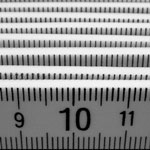 Numerous standard setting organizations around the world are active in defining voluntary nanotechnology and nanomaterial standards, although no one standard has achieved dominance yet. These standards address terminology, property testing, and issues of health and safety.
Numerous standard setting organizations around the world are active in defining voluntary nanotechnology and nanomaterial standards, although no one standard has achieved dominance yet. These standards address terminology, property testing, and issues of health and safety.
May 16th, 2008
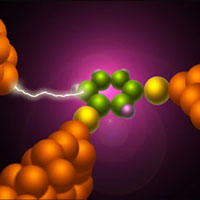 Ask 10 people what nanotechnology is and you will get 10 different answers. And then there are all these terms floating around: 'bottom-up' and 'top-down' fabrication, 'atomically precise manufacturing', 'molecular assembly', 'self-assembly', 'nanorobots', 'nanofactories' and so forth. Try describing nanotechnology as a top-down fabrication process and the folks over at Foresight and CRN will tell you what a short-sighted wuss you are. Try describing nanotechnology the Drexlerian way as a bottom-up molecular assembly technology and some scientists will tell you that you are smoking too much of the good stuff. And then of course you hear about all these 'nanotechnology' products already hitting the market - but they seem decidedly low-tech, such as golf balls, 'no-smell' socks, toothpaste, scratch-resistant car paint, and so on - that's what we have been investing billions and billions of dollars for? Pretty confusing, huh? Let's start to disentangle...
Ask 10 people what nanotechnology is and you will get 10 different answers. And then there are all these terms floating around: 'bottom-up' and 'top-down' fabrication, 'atomically precise manufacturing', 'molecular assembly', 'self-assembly', 'nanorobots', 'nanofactories' and so forth. Try describing nanotechnology as a top-down fabrication process and the folks over at Foresight and CRN will tell you what a short-sighted wuss you are. Try describing nanotechnology the Drexlerian way as a bottom-up molecular assembly technology and some scientists will tell you that you are smoking too much of the good stuff. And then of course you hear about all these 'nanotechnology' products already hitting the market - but they seem decidedly low-tech, such as golf balls, 'no-smell' socks, toothpaste, scratch-resistant car paint, and so on - that's what we have been investing billions and billions of dollars for? Pretty confusing, huh? Let's start to disentangle...
May 6th, 2008
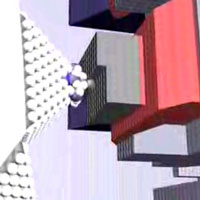 The newly created U.S. Nanotechnology Protection Agency (NPA) announced today, April 1, 2008, that, effective immediately, all laboratories and production facilities for molecular assemblers (commonly called nanobots) need a special license and have to follow strict guidelines in all research and production facilities that deal with nanoassemblers. At the same time, the NPA declared gray goo a hazardous substance. While the NPA regulations will have an immediate economic impact on many nanotechnology companies, most have been preparing for this dreaded day. However, public and media reactions seem to indicate that the public and many organizations were taken completely by surprise.
The newly created U.S. Nanotechnology Protection Agency (NPA) announced today, April 1, 2008, that, effective immediately, all laboratories and production facilities for molecular assemblers (commonly called nanobots) need a special license and have to follow strict guidelines in all research and production facilities that deal with nanoassemblers. At the same time, the NPA declared gray goo a hazardous substance. While the NPA regulations will have an immediate economic impact on many nanotechnology companies, most have been preparing for this dreaded day. However, public and media reactions seem to indicate that the public and many organizations were taken completely by surprise.
Apr 1st, 2008
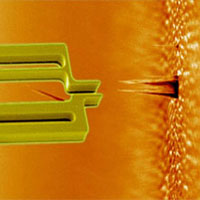 An Interagency Working Group on Manufacturing Research and Development established by the National Science and Technology Council has identified three technology areas as key research and development priorities for future manufacturing: Manufacturing for Hydrogen Technologies; Nanomanufacturing; and Intelligent and Integrated Manufacturing. The Working Group summarized their findings in a new report titled 'Manufacturing the Future.' Although this report is specific to the U.S., most of its general conclusions and recommendations apply to most other industrialized nations and their industrial nanotechnology efforts as well. Nanotechnology is viewed throughout the world as a critical driver of future economic growth and as a means to addressing some of humanity's most vexing challenges. Because of its broad range of prospective uses, nanotechnology has the potential to impact virtually every industry, from aerospace and energy to healthcare and agriculture. Nanomanufacturing integrates science and engineering knowledge and develops new processes and systems to assure quality nanomaterials, to control the assembly of molecular-scale elements, and to predictably incorporate nanoscale elements into nano-, micro-, and macroscale products utilizing new design methods and tools. Efforts in this area are directed toward enabling the mass production of reliable and affordable nanoscale materials, structures, devices, and systems. Nanomanufacturing includes the integration of ultra-miniaturized top-down processes and evolving bottom-up or self-assembly processes.
An Interagency Working Group on Manufacturing Research and Development established by the National Science and Technology Council has identified three technology areas as key research and development priorities for future manufacturing: Manufacturing for Hydrogen Technologies; Nanomanufacturing; and Intelligent and Integrated Manufacturing. The Working Group summarized their findings in a new report titled 'Manufacturing the Future.' Although this report is specific to the U.S., most of its general conclusions and recommendations apply to most other industrialized nations and their industrial nanotechnology efforts as well. Nanotechnology is viewed throughout the world as a critical driver of future economic growth and as a means to addressing some of humanity's most vexing challenges. Because of its broad range of prospective uses, nanotechnology has the potential to impact virtually every industry, from aerospace and energy to healthcare and agriculture. Nanomanufacturing integrates science and engineering knowledge and develops new processes and systems to assure quality nanomaterials, to control the assembly of molecular-scale elements, and to predictably incorporate nanoscale elements into nano-, micro-, and macroscale products utilizing new design methods and tools. Efforts in this area are directed toward enabling the mass production of reliable and affordable nanoscale materials, structures, devices, and systems. Nanomanufacturing includes the integration of ultra-miniaturized top-down processes and evolving bottom-up or self-assembly processes.
Mar 28th, 2008
 Only 30% of all freshwater on the planet is not locked up in ice caps or glaciers (not for much longer, though). Of that, some 20% is in areas too remote for humans to access and of the remaining 80% about three-quarters comes at the wrong time and place - in monsoons and floods - and is not always captured for use by people. The remainder is less than 0.08 of 1% of the total water on the planet. Expressed another way, if all the earth's freshwater were stored in a 5-liter container, available fresh water would not quite fill a teaspoon. The problem is that we don't manage this teaspoon very well. Currently, 600 million people face water scarcity. Depending on future rates of population growth, between 2.7 billion and 3.2 billion people may be living in either water-scarce or water-stressed conditions by 2025. Freshwater looks like it will become the oil of the 21st century - scarce, expensive and the reason for armed conflicts. While in our previous article we have only talked about nanotechnology and water in general terms, a new paper gives us the opportunity to look in more detail at the role that nanotechnology could play in resolving issues relating to water shortage and water quality. This review highlights the uses of nanotechnology in areas relevant to water purification, including separation and reactive media for water filtration, as well as nanomaterials and nanoparticles for use in water bioremediation and disinfection.
Only 30% of all freshwater on the planet is not locked up in ice caps or glaciers (not for much longer, though). Of that, some 20% is in areas too remote for humans to access and of the remaining 80% about three-quarters comes at the wrong time and place - in monsoons and floods - and is not always captured for use by people. The remainder is less than 0.08 of 1% of the total water on the planet. Expressed another way, if all the earth's freshwater were stored in a 5-liter container, available fresh water would not quite fill a teaspoon. The problem is that we don't manage this teaspoon very well. Currently, 600 million people face water scarcity. Depending on future rates of population growth, between 2.7 billion and 3.2 billion people may be living in either water-scarce or water-stressed conditions by 2025. Freshwater looks like it will become the oil of the 21st century - scarce, expensive and the reason for armed conflicts. While in our previous article we have only talked about nanotechnology and water in general terms, a new paper gives us the opportunity to look in more detail at the role that nanotechnology could play in resolving issues relating to water shortage and water quality. This review highlights the uses of nanotechnology in areas relevant to water purification, including separation and reactive media for water filtration, as well as nanomaterials and nanoparticles for use in water bioremediation and disinfection.
Feb 22nd, 2008
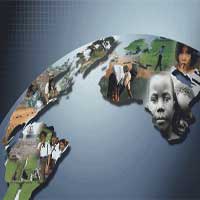 A number of researchers and organizations such as the Meridian Institute in the US believe that nanotechnology could contribute to some or all of the UN Millennium Development Goals, aiming for poverty reduction by 2015. Applications of nanotechnology that could benefit those living in poverty include diagnostics and therapies for infectious diseases, water purification and desalination, sustainable energy production, and environmental monitoring and remediation. Nanotechnology could also contribute to food security by boosting the yields of food crops, and packaging materials coated with nanoparticles that will allow food to be stored longer. So far, nanotechnology has been an area of 'technology push', with substantial investments in both generic research and technology development, in the absence of clear market demand. Worldwide, private investments in research have recently overtaken public funding, but the potential advantages of nanotechnology-based products compared to other alternatives are not yet clear. Also, there is a growing global debate on the ethical, legal and social aspects of nanotechnology, in particular the potential risks to human health and the environment posed by engineered nanomaterials. Nanotechnology is still mainly a solution looking for problems to solve, including sustainable development issues.
A number of researchers and organizations such as the Meridian Institute in the US believe that nanotechnology could contribute to some or all of the UN Millennium Development Goals, aiming for poverty reduction by 2015. Applications of nanotechnology that could benefit those living in poverty include diagnostics and therapies for infectious diseases, water purification and desalination, sustainable energy production, and environmental monitoring and remediation. Nanotechnology could also contribute to food security by boosting the yields of food crops, and packaging materials coated with nanoparticles that will allow food to be stored longer. So far, nanotechnology has been an area of 'technology push', with substantial investments in both generic research and technology development, in the absence of clear market demand. Worldwide, private investments in research have recently overtaken public funding, but the potential advantages of nanotechnology-based products compared to other alternatives are not yet clear. Also, there is a growing global debate on the ethical, legal and social aspects of nanotechnology, in particular the potential risks to human health and the environment posed by engineered nanomaterials. Nanotechnology is still mainly a solution looking for problems to solve, including sustainable development issues.
Feb 20th, 2008
 How much money would you pay to live forever? $100? $1,000? $100,000,000,000? Keeping in mind that forever is a long time; you could certainly arrange some kind of longterm loan, since you'd have plenty of time to make the payments. Historically, only religions have the lock on immortality. Thus guided by divine inspiration and a codicil transcribed directly from God, most religions profess the rebirth of consciousness after the body is disposed of. Well, guess what? There are some nanotechnologists who claim that in a few decades, death will be a choice rather than a requirement. Let's see how we can come to this rather heretical conclusion. Intel is already manufacturing devices with feature sizes about 20 nanometers across. A red blood cell is on the order of 10,000 nanometers across. In 2 dimensions we could stack about 250,000 components in the same space as a red blood cell. If the trends continue as far as 2017, which may be the end-point of Moore's Law we could be looking at a manufactured device the size of a red blood cell with 256,000,000 components. If we add the third dimension, that could translate into 65,536,000,000,000,000 components. Somewhere along the way, we're talking about the raw technical capability to produce a rather sophisticated robot small enough to wander around through your body doing whatever it has been programmed to do. The real question is, how practical is this speculation?
How much money would you pay to live forever? $100? $1,000? $100,000,000,000? Keeping in mind that forever is a long time; you could certainly arrange some kind of longterm loan, since you'd have plenty of time to make the payments. Historically, only religions have the lock on immortality. Thus guided by divine inspiration and a codicil transcribed directly from God, most religions profess the rebirth of consciousness after the body is disposed of. Well, guess what? There are some nanotechnologists who claim that in a few decades, death will be a choice rather than a requirement. Let's see how we can come to this rather heretical conclusion. Intel is already manufacturing devices with feature sizes about 20 nanometers across. A red blood cell is on the order of 10,000 nanometers across. In 2 dimensions we could stack about 250,000 components in the same space as a red blood cell. If the trends continue as far as 2017, which may be the end-point of Moore's Law we could be looking at a manufactured device the size of a red blood cell with 256,000,000 components. If we add the third dimension, that could translate into 65,536,000,000,000,000 components. Somewhere along the way, we're talking about the raw technical capability to produce a rather sophisticated robot small enough to wander around through your body doing whatever it has been programmed to do. The real question is, how practical is this speculation?
Feb 13th, 2008
 Oscar Pistorius - also known as 'Blade Runner' - is a double leg amputee who is using specially developed artificial legs to compete in races. A world record holder in the 100, 200 and 400 meters Paralympic events, Pistorius was denied by the International Association of Athletics Federations (IAAF) his application to participate in the 2008 Summer Olympics. The IAAF argued that his prosthetic racing legs give him a clear competitive advantage. On May 16, the IAAF's decision was overturned by the Court of Arbitration for Sport, allowing Pistorius to participate in the Olympics if he could make the minimum qualifying time. This episode drives home the monumental issues our society will be facing in the not too distant future thanks to our increasing technological ability to enhance the human body. Terms like 'health', 'disease', 'therapy' and 'medicine' will have to be radically redefined.
Oscar Pistorius - also known as 'Blade Runner' - is a double leg amputee who is using specially developed artificial legs to compete in races. A world record holder in the 100, 200 and 400 meters Paralympic events, Pistorius was denied by the International Association of Athletics Federations (IAAF) his application to participate in the 2008 Summer Olympics. The IAAF argued that his prosthetic racing legs give him a clear competitive advantage. On May 16, the IAAF's decision was overturned by the Court of Arbitration for Sport, allowing Pistorius to participate in the Olympics if he could make the minimum qualifying time. This episode drives home the monumental issues our society will be facing in the not too distant future thanks to our increasing technological ability to enhance the human body. Terms like 'health', 'disease', 'therapy' and 'medicine' will have to be radically redefined.
 Subscribe to our Nanotechnology Spotlight feed
Subscribe to our Nanotechnology Spotlight feed





